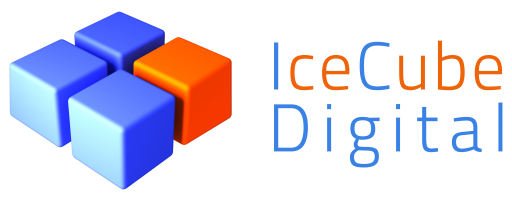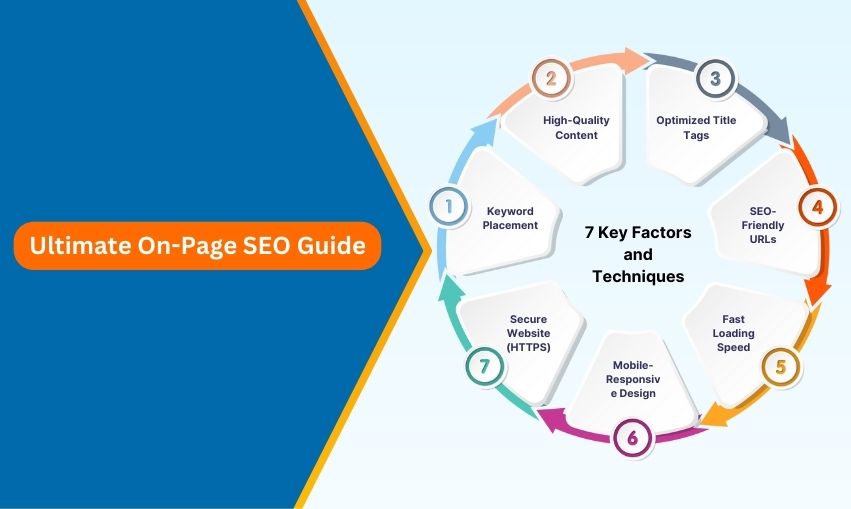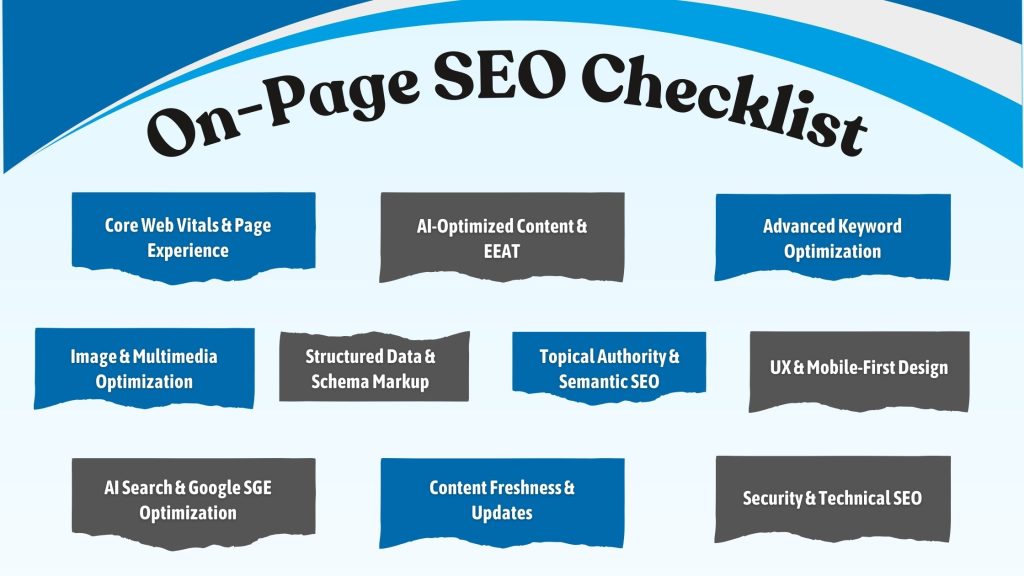In the present times, search engine optimization revolves around Google only, but the practice of SEO began before the inception of Google itself. It was in 1995 when Heyman and his partner Leland Harden worked on boosting the references to the official page of their band, “Jefferson Starship”, and their efforts helped in bringing the website to the top.
However, after all these years, On-page SEO remains a critical factor in improving search engine rankings and user experience. With evolving Google algorithms, AI-driven search, and mobile-first indexing, optimizing your website’s content, structure, and performance is more important than ever. The SEO field has become diverse, and having a checklist is important to keep you focused on the optimization journey. That’s why this comprehensive guide discusses everything one should know about on-page SEO, key factors, techniques, and a checklist to streamline your efforts.
What is On-Page SEO?
On-page SEO is the process of optimizing different parts of the website to align it with search engines’ standards and users’ expectations. A number of website elements play a crucial role in determining its ranking on search engine result pages. For instance, page speed, information hierarchy, keywords, title tag, relevancy, and content quality. These are the factors that are the key elements of on-page SEO, and with the help of a professional SEO expert, you can directly influence the ranking.
On-page SEO is all about changing the elements of the website over which you have direct control, and simple improvements can boost your ranking. For instance, add a blog category on your website where you publish blogs on topics that are highly looked at by your target audience. The topics can be either informing them about the service/product you are offering or resolving the common queries that target users have related to your products. With time, the blog pages with high-quality content will start to rank better, and it will drive organic traffic to your website.
Why Does On-Page SEO Matter?
Generally, it is recommended to focus on on-page SEO before working on off-page SEO. It is because improving the user experience of your website matters above all. As a professional on-page SEO agency, we prioritize on-page SEO first and then off-page because it helps Google to understand your services, brand, and products.
Search engines usually have bots that find websites on the Internet, crawl their content, follow links on the site, and create an index of the crawled sites. The index is like a huge database of URLs, and search engines like Google use the algorithm to rank the URLs. If the bot is unable to find, crawl, or index your website, your website is likely to rank lower. A strong on-page website strategy focuses on eliminating crawlability problems and perfecting the website to the maximum extent such that it becomes easily crawlable and indexable.
How On-page SEO Helps You Rank Higher?
On-page SEO is the foundation of a strong search engine ranking strategy. By optimizing various elements on your website, you make it easier for Google to crawl, index, and understand your content, leading to higher rankings in search engine results pages (SERPs). Besides, on-page SEO is important because search engines prioritize people-first content whenever processing a user’s query.
In August 2022, Google rolled out an update to ensure that users find more original and relevant content that is written for people and by people. Then, after a few months, it released the EEAT framework, which revolves around Experience, Expertise, Authoritativeness, and Trustworthiness. When Google finds your content helpful, it will rank you higher to help the users easily find what they are looking for.

See How Our Experts Can Drive More Traffic to Your Website!
SEO: Boost your rankings and drive more organic traffic today!
Website Design/Development: Create a stunning website that converts visitors into customers.
Paid Media: Reach the right audience at the right time with expertly managed paid media.
7 Key Factors and Techniques For On-Page SEO
Google has more than 100 ranking factors. However, there are seven key elements on the website that on-page SEO specialists recommend focusing more on as compared to others. Let’s understand the seven key factors:
1. Proper Keyword Placement
Keywords form the foundation of a good on-page SEO strategy. While research is the most important part, another crucial thing is their placement and usage. Understand the intent behind the keywords, like are they users are trying to look for information, recommendations, solutions, or anything else. Use them strategically by placing them naturally and evenly throughout the content. Ensure they are used in titles and subheads and maintain their 1-2% density of the total blog word count. Also, avoid keyword overstuffing.
2. High-Quality Content
Quality content is the thing that holds your website together. When the content is well-written, informative, and visually appealing, visitors are more likely to spend more time on your webpage. Besides, quality content will attract backlinks from other websites and social media posts; this will drive the off-page SEO strategy. The best way to create high-quality content is by following Google’s EEAT framework.
3. Optimized Title Tags
The title tag is an HTML tag that specifies the webpage title. It tells the search engine what the page is all about, and it directly influences the rankings and clicks. For instance, “10 Essential UX Design Principles for Fintech Apps” is an optimized meta title, as it has the following elements: includes relevant keywords (UX design, fintech apps), under 60 characters to avoid truncation, and uses a number to attract clicks. Compare this with its unoptimized version: “Fintech UX Design Principles You Should Know About”. You can check the length of the meta title and meta description with a tool like Meta Length Checker.
4. Clean and SEO-Friendly URLs
A URL is the web address of your page, and it contributes to the overall user experience, helps the search engines understand the content, and influences the webpage’s ranking in SERPs. The URLs should be logically structured so that the bots can understand the hierarchy of the website and index it properly. Professional on-page SEO service providers focus on including the primary keyword in the URLs to improve the visibility of search results for specific queries.
5. Fast Loading Speed
The loading speed of a website depends upon external and internal factors. The external factors include server/host response time and network connection, and internal factors include page elements, file sizes, code efficiency, plugins, and widgets and together, these factors can affect the webpage loading speed.
After analyzing over 4 billion websites, 2023 report stated that the average webpage loading speed on desktop is 2.5 seconds and 8.6 seconds on mobile. Most mobile websites take a long time to load, and mobile users expect websites to load much more quickly. Hence, SEO services USA can help in identifying the factors and implementing strategies to increase the loading speed.
6. Mobile-Responsive Design
The majority of the traffic comes from mobile devices, and not optimizing your website for mobile screens means missing out on a major portion of your potential audience. Google considers the mobile version of a website’s content for indexing and ranking. It is one of the top SEO trends to watch in 2025, and as you start your journey with digitalization and search engine optimization, implement a responsive design that ensures the website design gets adapted as per the screen size and all the elements are displayed properly.
7. Secure Website (HTTPS)
HTTPS encrypts data between the user and the website, protecting sensitive information (e.g., login credentials and payment details). Google prioritizes secure websites to protect users, and it officially considers HTTPS as a ranking signal. Secure websites get a slight boost in search rankings compared to non-secure (HTTP) sites. Besides, users may leave immediately if a site is marked Not Secure, increasing the bounce rate. You can get an SSL certificate from service providers like GoDaddy and Namecheap, or an SEO service agency can help you deploy a secure website.
Difference Between On-Page SEO and Off-Page SEO
Search engine optimization broadly focuses on two aspects: on-page SEO and off-page SEO. On-page SEO focuses on improving the elements of the website to improve its credibility, and off-page SEO includes strategies used outside of the website to boost its credibility. Let’s look at the common differences between the two:
| Factors | On-page SEO | Off-page SEO |
|---|---|---|
| Focus | Improving content, HTML and CSS scripts, and overall webpage architecture, navigation | Building external relationships through backlinking, reputation, and authority |
| Key Elements | Content optimization, meta tags, URL structure, internal linking, and content quality | Backlinks, brand mentions, influencer marketing, social media marketing, Google business profile, and Local SEO |
| Control | Website developers and owners have full control over on-page SEO | Owners have partial control; however, it is mostly influenced by external entities |
| Impact on Rankings | Improves relevance and visibility directly on the site | Boosts credibility and authority from external sources |
On-Page SEO Checklist for Better Rankings
SEO is not just a one-time task; rather, it is an ongoing effort. The search engine algorithms are updating, and with that, the SEO checklist and strategy should also evolve. For instance, Google released a new update in March 2025, and not aligning the SEO strategy with it may affect the ranking of websites. Here is an on-page SEO checklist for 2025 that professionals can keep in mind while optimizing their websites for better ranking in search engines:
-
Core Web Vitals & Page Experience
Google supports a set of Core Web Vitals which are common signals that are crucial for all users’ web experience. Largest Contentful Paint (LCP), First Input Delay (FID), and Cumulative Layout Shift (CLS) are sets of metrics that measure the user experience of a website.
So, ensure your website meets the criteria of the metrics and creates a positive page experience. This means the webpage should exceed user expectations in all aspects, from information quality to its speed, stability, and visual appeal.
-
AI-Optimized Content & EEAT
When it comes to content quality, the focus should be on creating unique and original content. Ensure the content, whether website or blog, fits the EEAT framework, as it helps in building credibility and boosting visibility.
Along with optimizing the content to rank on SERPs, the content should also be optimized for AI search engines, such that your website gets featured in the AI overview section on Google or other AI search engines. You can hire AI SEO experts who can help in creating a content strategy that will help the content ranking on AI search engines.
-
Advanced Keyword Optimization
In 2025, it is time to evolve the keyword optimization strategy. Go beyond basic keyword research by leveraging long-tail keywords, intent-based phrases, and Latent Semantic Indexing (LSI) keywords. With the rise in voice searches, you should include question-based keywords that are commonly asked by your target audience.
Sort the keywords on the basis of their intent, like information, navigation, commercial, and transactional. Naturally place the keywords and distribute them throughout the content piece without overstuffing.
-
Image & Multimedia Optimization
Image and multimedia optimization is important for two reasons: first, it increases website loading speed, and second, it enhances the interaction with users. Enable Gzip compression, which compresses HTML, CSS, and JavaScript files before they are sent to the browser.
Also, write a short, keyword-infused (if possible), and informative image Alt text, which is stored in the webpage’s code. It will allow the search engines and users to understand what the image wants to convey. With the rise of image search features, ensure that the images are optimized for image search, which will increase visibility.
-
Structured Data & Schema Markup
Schema markup for products, articles, and FAQs increases the likelihood of rich snippets, boosting click-through rates and search visibility with enhanced SERP features. You can check if your Schema is set up perfectly for rich results through the Schema Markup Validator.
Google prefers to use schema.org vocabulary to create structured data and use JSON-LD format. If you’re unfamiliar with writing code, it’s best to hire an expert or a virtual SEO consultant to help implement structured data for better search visibility.
-
Topical Authority & Semantic SEO
Topical authority refers to a website’s credibility and expertise in a specific subject area. Develop a strong topical authority by creating content clusters around a core theme. This strategy often involves creating pillar content, which are comprehensive guides, and then supporting content, like blogs, FAQs, and case studies.
Use semantic SEO by incorporating related terms, synonyms, and entities that enhance content relevance and improve search rankings for broader keyword coverage. Hiring SEO consultants will streamline this task as they have a broad understanding of semantic SEO and how the right keywords can help search engines understand content contextually.
-
UX & Mobile-First Design
Mobile Internet has grown by 504% since 2011, and mobile optimization should be on your on-page SEO checklist for 2025 if it weren’t before. Since Google considers the mobile version for indexing, if the mobile version doesn’t meet the needs, you will often see a fall in your rankings. Here are the key elements that are a part of mobile-first design:
- Provides a zoom-free experience
- Call-to-action (CTA) buttons are easy to find and click on all devices
- Content and visuals fit the screen perfectly
- A navigation bar is properly displayed and positioned on all screen sizes
- Forms are easily accessible and can be quickly filled
Also, Google prefers websites with intuitive user experience (UX), and it mainly focuses on user-centered design and frictionless navigation.
-
AI Search & Google SGE Optimization
Google Search Engine Experience, or Google SGE, redefines the user experience of searching for anything on Google. With Generative AI integrated into the search, users will get an AI-powered snapshot of all the key information required, along with the respective source links to get more information.
One of the things that you can do to get included in AI overviews is to improve the schema markup that can help to set apart your content from other competitors. Also, you should prioritize natural language, which is a best practice for voice search. SGE understands day-to-day language, and your content should speak like your audience.
-
Content Freshness & Updates
Content is king, according to Google, and if your website has stale or age-old informative content, then you will find a hard time ranking at higher positions. It is essential to keep the content up-to-date and have a consistent content calendar prepared such that you are posting new content daily at regular intervals. You can add an Update feature with the date and time on your blog pages, which informs the visitors that the content has been updated with the latest information. This will boost the engagement with readers because they will know that the blog is updated with the latest information.
-
Security & Technical SEO
A secure and technically optimized website is important for a secure user experience and for gaining users trust. From deploying the HTTPS website and regularly updating CMS, plugins, and security patches to prevent vulnerabilities, the developers should continuously work on security aspects.
Technical SEO improves the technical aspects associated with website architecture and elements. The team of web designers and developers conducts a website audit to find the gaps, and with the right strategies, they try to create a cohesive and complete website browsing experience. It includes:
- Optimize robots.txt to control search engine crawling.
- Implement XML sitemaps to improve indexability.
- Fix broken links and 404 errors to enhance user experience.
- Minimize render-blocking scripts and optimize code for better performance.
- Use canonical tags to prevent duplicate content issues.
The Bottom Line
Following an on-page SEO checklist is crucial for maintaining a well-optimized website that ranks higher in search engines. Create a checklist of your own that aligns perfectly with your business goals. You can understand the existing gaps in your SEO strategy and website that are hindering your growth in search engine rankings and traffic. Accordingly, you can add tasks to your checklist that aim to bridge the gap between your website and industry standards.
This systematic approach to on-page SEO helps prevent errors, keeps your strategy consistent, and improves crawlability, ultimately driving more traffic and engagement. If you have SEO-related questions and answers or require expert guidance from professionals to make your SEO strategy more result-driven and goal-oriented, then Icecube Digital experts can help. Fill out the contact form and write your query to us, and we will get back to you at the earliest with a solid response.







